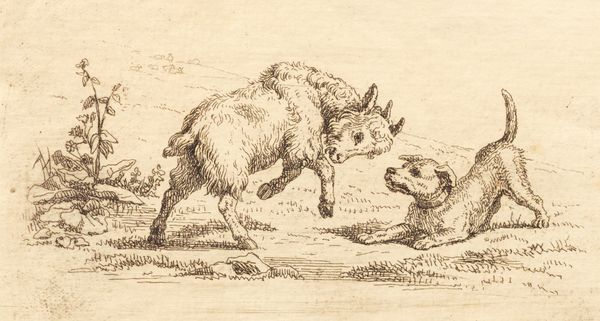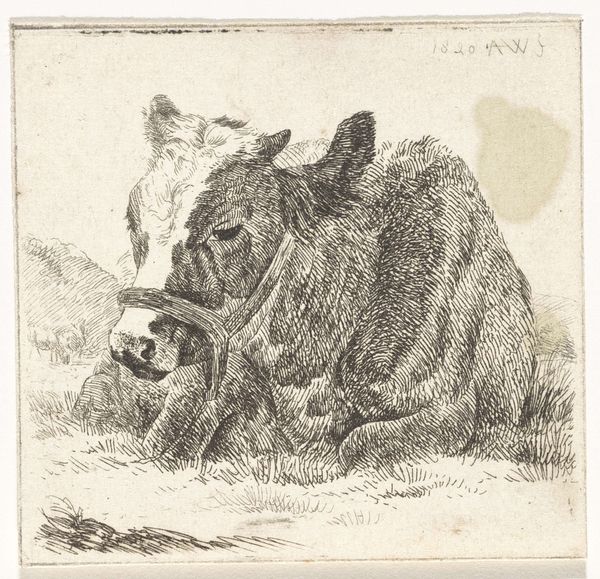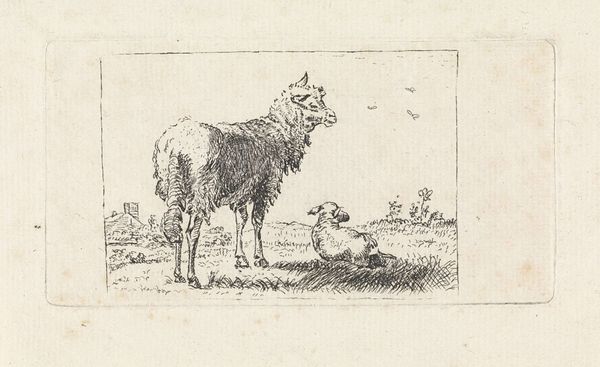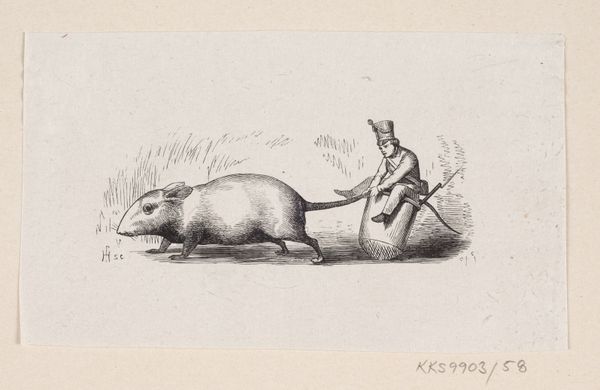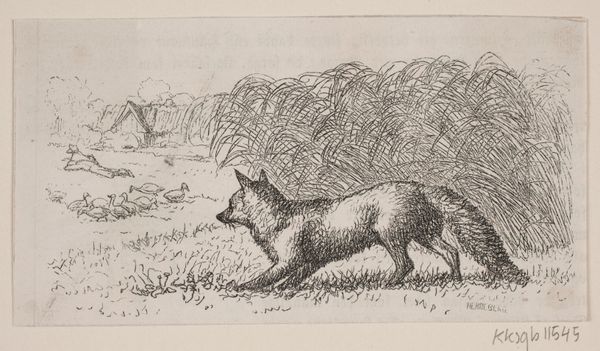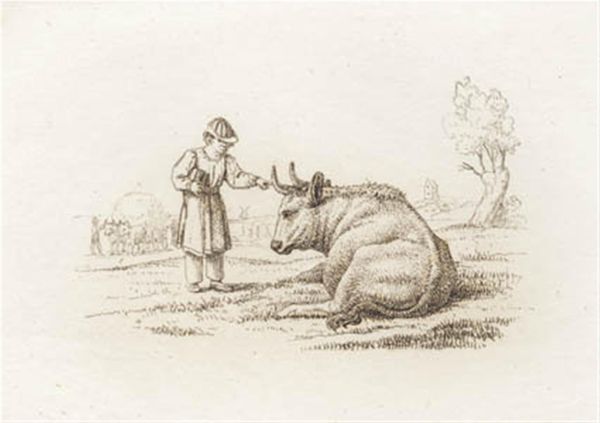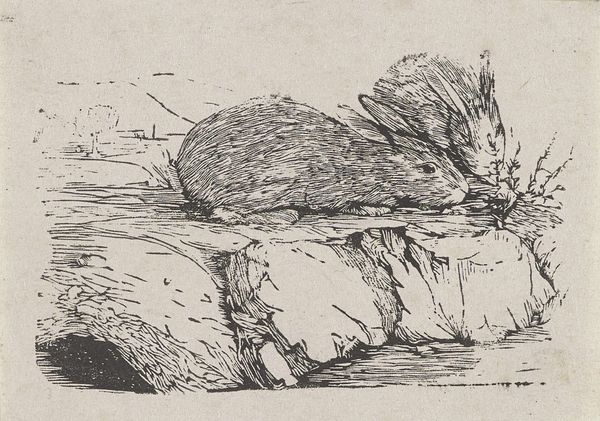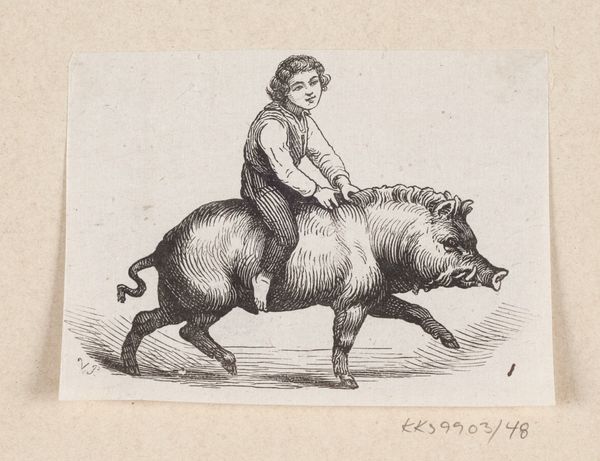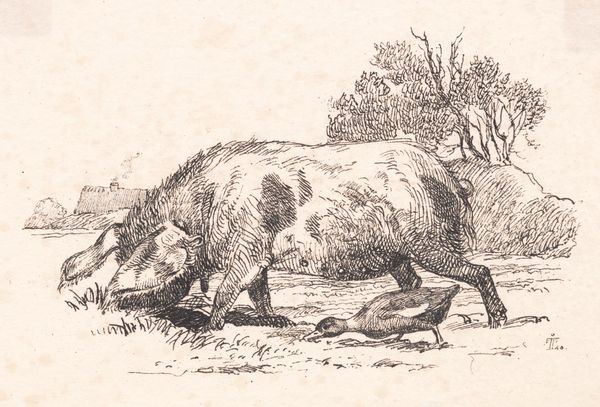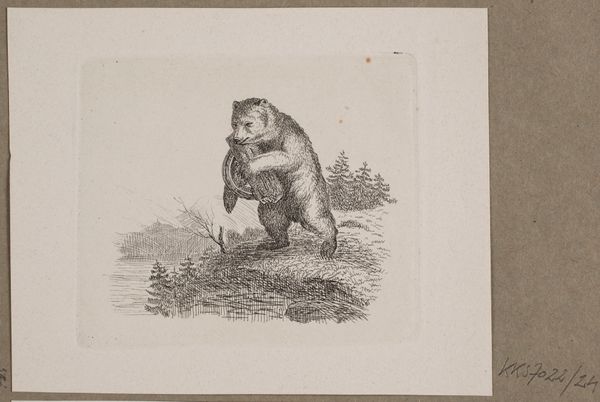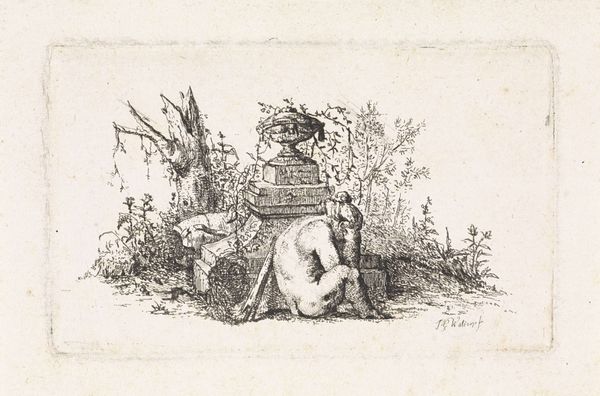
Illustration til "Halvhundrede Fabler for Børn" af Hey 1834
0:00
0:00
drawing, print, engraving
#
drawing
# print
#
landscape
#
line
#
genre-painting
#
engraving
Dimensions: 96 mm (height) x 163 mm (width) (plademaal)
Curator: Martinus Rørbye's 1834 engraving, "Illustration til 'Halvhundrede Fabler for Børn' af Hey," immediately strikes me. What do you make of its delicate lines? Editor: It has a storybook charm, definitely. I’m immediately drawn to the juxtaposition of the very large, seemingly docile animal with the diminutive figure of the child gesturing towards its horn. It speaks to a very particular sort of relationship to nature. Curator: Indeed. Rørbye has utilized linear precision to define the shapes and textures. Observe how varied hatching builds up the forms. The contrasting patterns across the animals flank and the boys garments provide visual texture. What sense does that make? Editor: Well, these illustrations would have reached a growing bourgeois audience, keen to impart moral lessons via entertaining fables. Genre scenes such as these reflected social norms and ideals and maybe reinforced particular conceptions of the world beyond their experience? The relationship with nature would surely have been a didactic component? Curator: That’s well said. What meaning do you interpret in the arrangement, composition, scale, and spatial relationships? I cannot decide whether the child's gesture is aggressive or merely exploratory, which alters the work’s interpretation entirely! Editor: Absolutely. The location itself evokes a distinct milieu, the idyllic, agricultural. Notice the details within that constructed idyll! There are haystacks and the distant presence of a windmill and a church or castle. All symbols in constructing a picture of harmonious order. What sort of meaning are we ascribing here in light of art history? Curator: Well, artist Rørbye skillfully balances realistic depiction and imaginative narrative, to portray nature both wild and domesticated, controlled and appreciated. Note, in that vein, his conscious articulation of perspective; his commitment is noteworthy. Editor: Looking at it from a social lens, it encourages consideration about nature and how one should look at these engravings and consider their relationship with their surrounding world. How does its role influence cultural attitudes? It looks like that message hasn't changed too much! Curator: Yes! It seems we're in concord. The interplay of form, function, and subject contributes significantly to the work's subtle communicative power. Editor: And with that lens in mind, its role as a public artwork makes it an enduring snapshot of society's engagement with narratives surrounding culture and agrarian society.
Comments
No comments
Be the first to comment and join the conversation on the ultimate creative platform.
